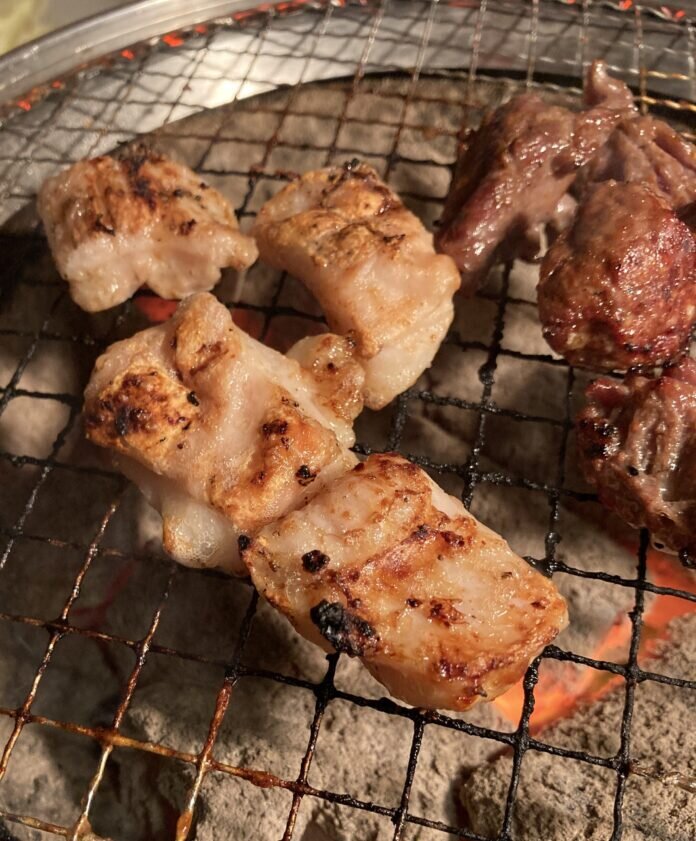
Table of Contents
What is Japanese Offal – Horumon?
Japanese offal, known as ‘Horumon’ or refers to the edible organs of animals such as cows and pigs. In a narrow sense, horumon refers to the small and large intestine. However, expanding further to offal, it also includes kidney, liver, heart and other organs. Alongside this, there are a variety of ways to enjoy horumon, whether it is grilled or boiled. One of the most common ways to enjoy horumon is through yakitori or yakiniku (Korean BBQ). This is actually where eating horumon originated. Organ meat and horumon were inexpensive, great to pair with alcohol and filled with nutrients. Over time, it grew popular and people started to expand outside of yakiniku. how to make horumon
Japanese offal is said to have originated in the Kansai region. The Kansai expression ‘horumon’ literally translates to ‘discarded bits’. Instead of discarding them, people from Osaka decided to utilise them in yakiniku. It has become a staple in Japan’s B-class gourmet cuisine. It is a tasty yet inexpensive working class food that can be found throughout Japan.
For this recipe, I will be teaching you how to make Japanese offal karaage using cow intestine. The crispy batter balances perfectly with the soft and chew texture of the intestine.
History of Horumon
Offal has been around since the start of the 7th century. It is said that the Japanese word ‘Horumon’ derived from the German word ‘Hormon’. During those times, people wanted to use as much of the animal as possible to avoid waste. Furthermore, offal contains a lot of nutrients. Further forward, during the early 20th century, offal became more popular.
Micho Sasaki published a book called ‘Cultural History of Yakiniku’ in the 1920s. Sasaki claimed that dishes that boosted energy were labeled as ‘horumon’. This included eggs, natto (fermented beans) and even yams. Several years later, Tsunekichi Uotani published ‘Longevity Cuisine’ in 1936. Uotani noted that horumon were visceral dishes. From this point, horumon gained popularity, especially before World War Two. The main way of eating was by grilling, gaining the name ‘Horumonyaki’. During these times, people did not know how to make japanese offal fully so grilling was the easiest and most delicious way to eat it.
Types of Horumon and Offal
Small intestine
Known as ‘Marucho’ or ‘Kopuchan’, small intestines is rich with fat and therefore, it is very sweet and rich. The high collagen content helps with healthy skin! Cooking over a low heat till medium will help keep too much of the fat escaping. It is creamy so a miso based sauce is ideal.
Large intestine
Typically cow intestines are used and is pronounced ’Techan’ in Japanese. It is high in fat and nutrients. Most typically, this is grilled and has a soft and chewy texture. The taste is milder and mroe refreshing than the fat of red meat. Compared to the small intestine, it is thicker and chewier. If you enjoy the chewy texture, it can be grilled medium rare. however, for a softer texture, you can cook longer to render the fat out. A sweet sauce helps balance the richness of the fat!
Liver
Liver is commonly eaten throughout the world, most commonly in foie gras. However in Japan, the most popular method is yakitori, which is skewed and grilled over charcoal.
Heart
Pig and cow hearts can be eaten. The former being crunchy in texture and relatively low in fat. Cow heart is lighter and rich in vitamin B1. These are commonly grilled like yakitori. It has a mild taste so a strong sauce is recommended pair with.
Tongue
My personal favourite, beef tongue in thinly sliced and grilled over charcoal. It is lightly grilled so that it is partially cooked and It is usually served with lemon juice and spring onions.
There are so many more types of offal, such as gizzards, kidney and stomach. However these are the most common.

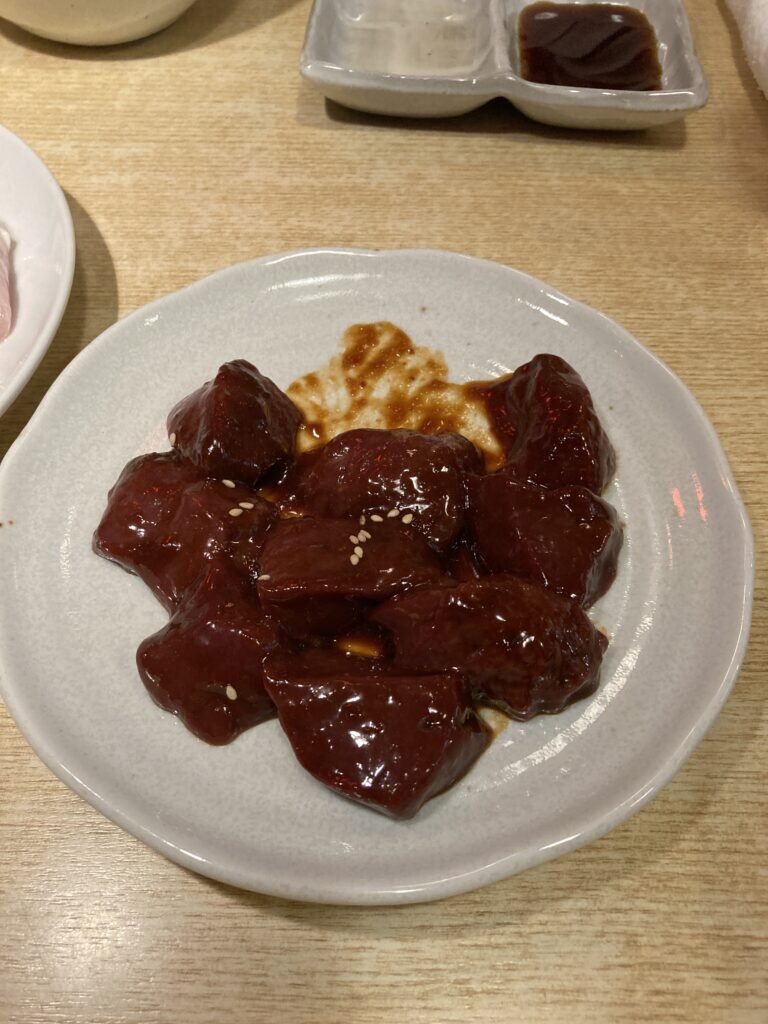
Different ways to enjoy Horumon
Horumonyaki (Grilled Horumon)
This is the first dish that made Japanese offal popular. It is one of the specialities of Osaka and is traditionally cooked over a charcoal grill. The horumon is marinated before cooking to add more flavour, such as, miso, soy sauce and salt. You can watch how it is served, cooked and eaten, here.
Karaage (Horumon Tempura)
Horumon is marinated in soy sauce and sake. It is then coated in batter and then fried. Tempura offers a lighter batter, while karaage is more heavy. The crispy exterior pairs well with the soft horumon.
Motsunabe
This dish actually originated in southern Japan, in a city called Fukuoka. This is made by using beef/pork off cuts and horumon with cabbage and garlic chives. These are all stewed in a miso and soy sauce flavored broth and is a warm and hearty dish, which fills the soul. It is a low calorie dish, high in protein so has become increasingly popular.
Horumon Don
Offal is stewed in miso till delicately tender. This is then served over rice with various toppings such as seven spice shichimi and spring onions.
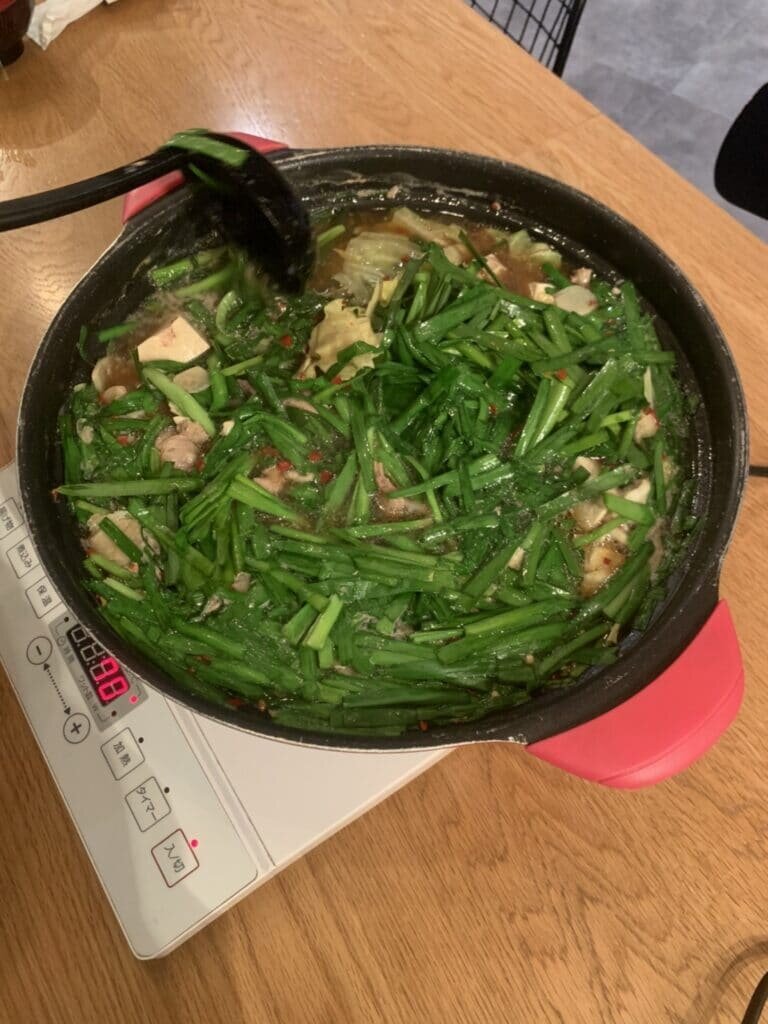
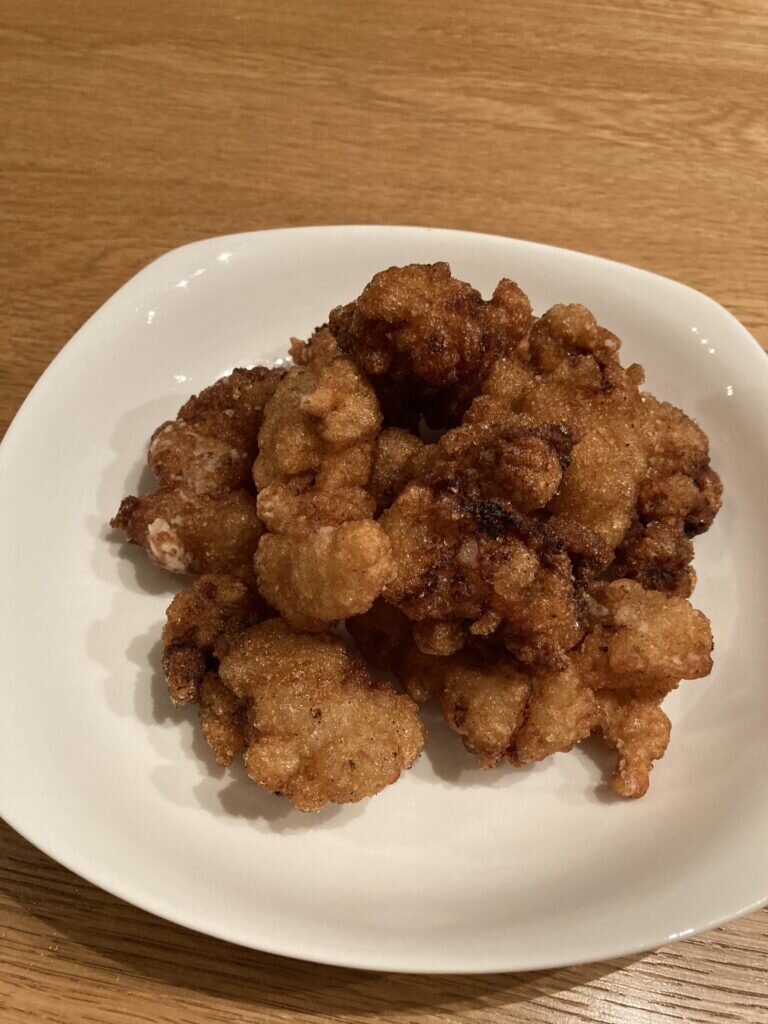
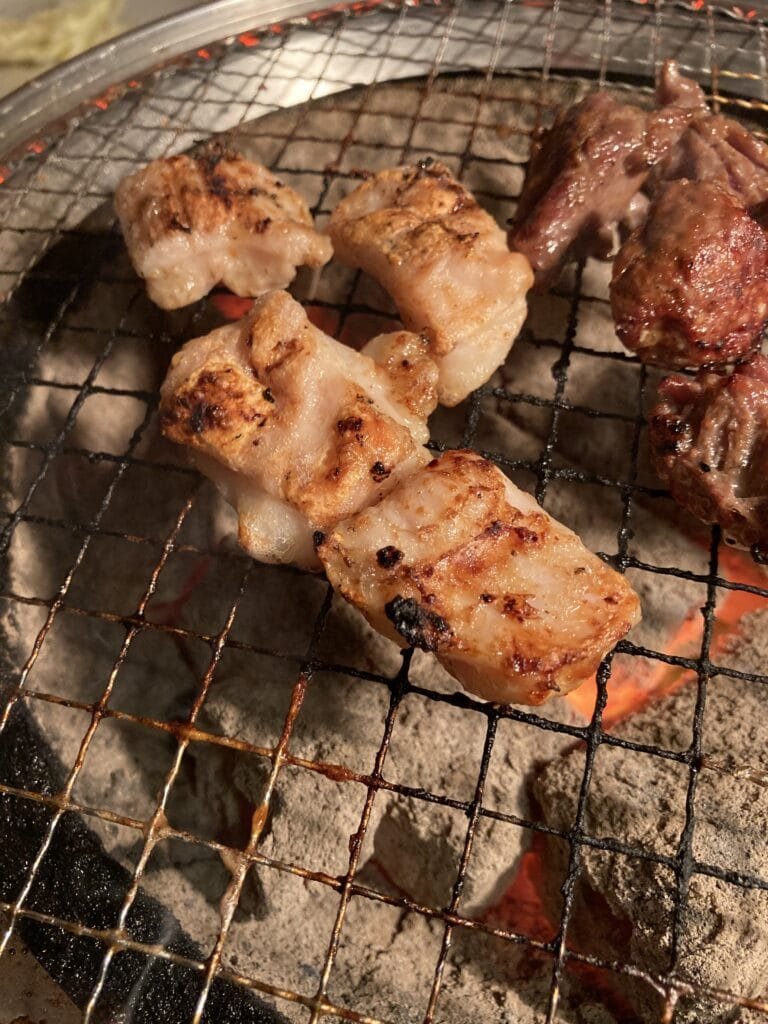
How to make Horumon Karaage
For this recipe, I will be explaining how to make Japanese offal karaage. Karaage is a type of fried chicken in Japan so for this recipe I will be deep frying horumon. Deep frying isn’t the most common way of eating it, however it adds a lovely crunchy texture to the dish.
Ingredients
300g hormone
1 clove of grated ginger
1 thumb sized knob of grated ginger
1/2 tsp salt
1 tbsp soy sauce
1 tbsp mirin
1 tsp sake
Neutral flavoured oil for deep frying (I used vegetable oil)
Potato starch
Mayonnaise (optional)
Spring onions (optional)
Lemon (optional)
Method
Step 1
The first step is to marinate the horumon. Add the soy sauce, mirin, sake, salt, grated ginger and garlic. After, mix and then cover with plastic wrap. Place one piece of plastic wrap directly on top of the horumon and then one over the top of the bowl. This will help with the marination process. Leave this for 1 hour or even overnight.
Step 2
After marinating, drain any excess marinade from the horumon. Use a colander and remove any extra liquid. This will help create a crunchy exterior when deep frying.
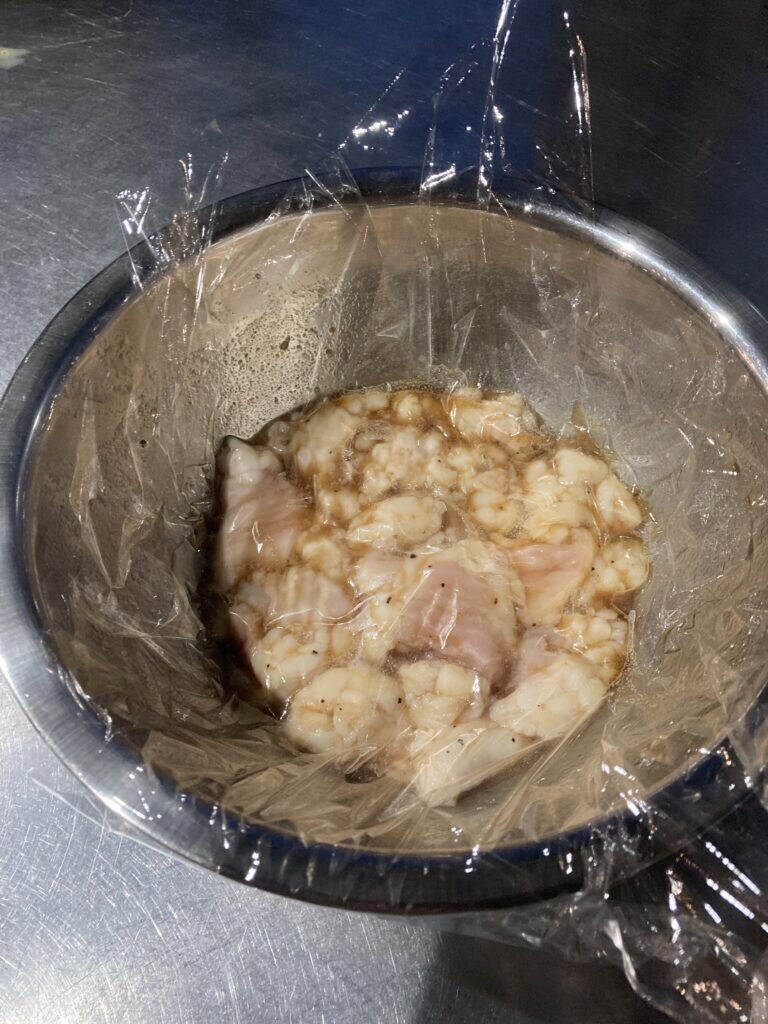
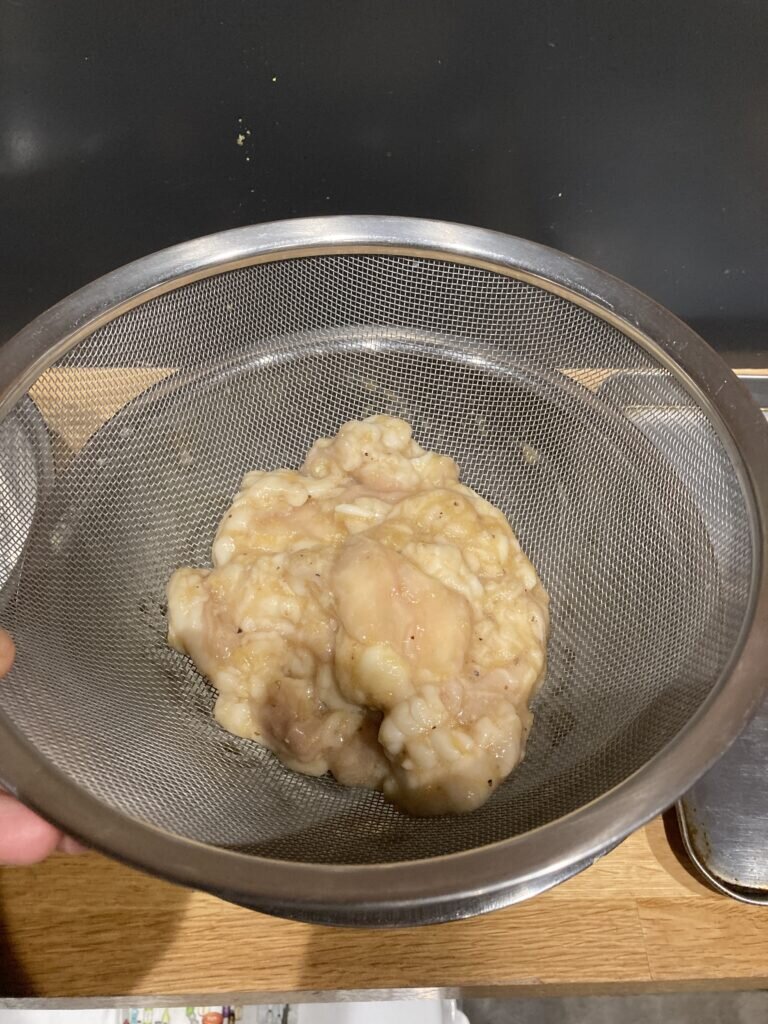
Step 3
After draining, coat each piece of horumon in potato starch. In addition, make sure each piece is evenly coated and shake off any excess potato starch.
Step 4
After marinating, drain any excess marinade from the horumon. Use a colander and remove any extra liquid. This will help create a crunchy exterior when deep frying.

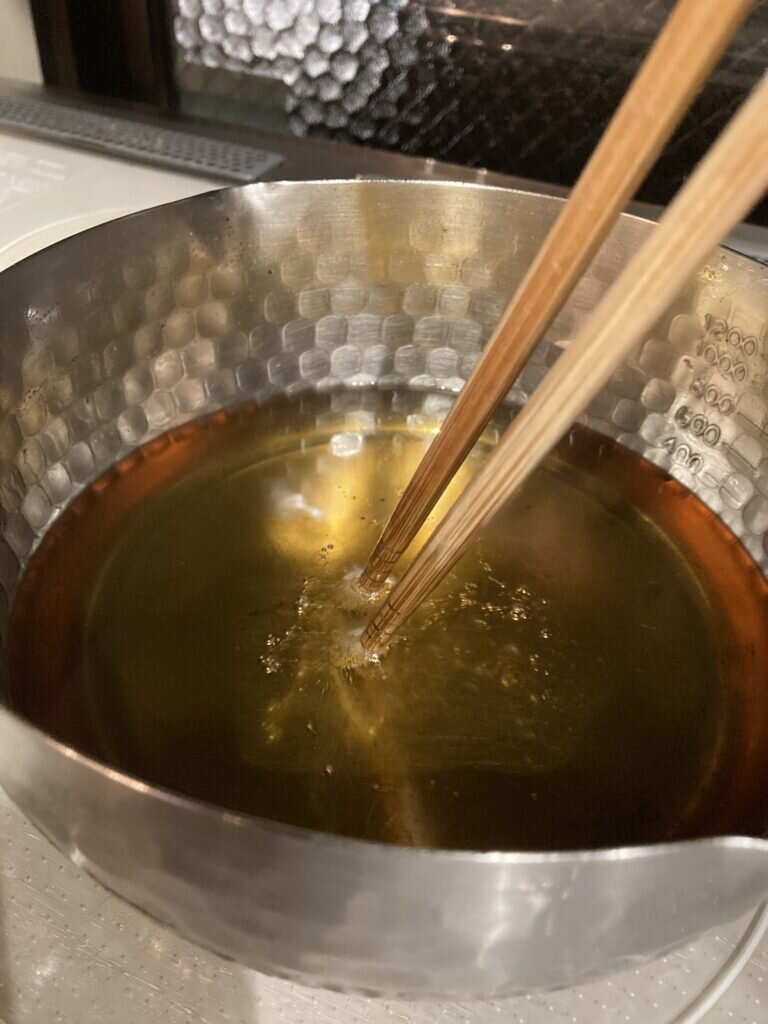
Step 5
Slowly add each piece of horumon into the oil and deep fry for around 4-5 minutes. This should result in a nice golden brown exterior and tender centre.
Step 6
Once cooked through, place on a wire rack and let the excess oil drain. Then enjoy with toppings of your choice like: green onions or sesame seeds.
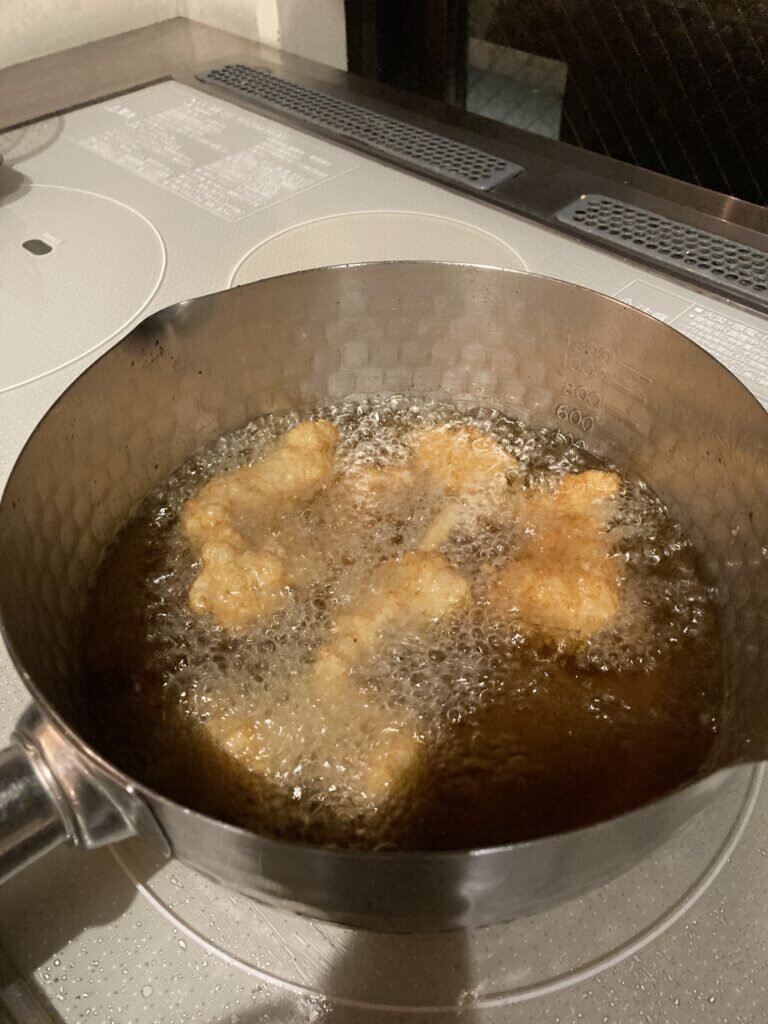
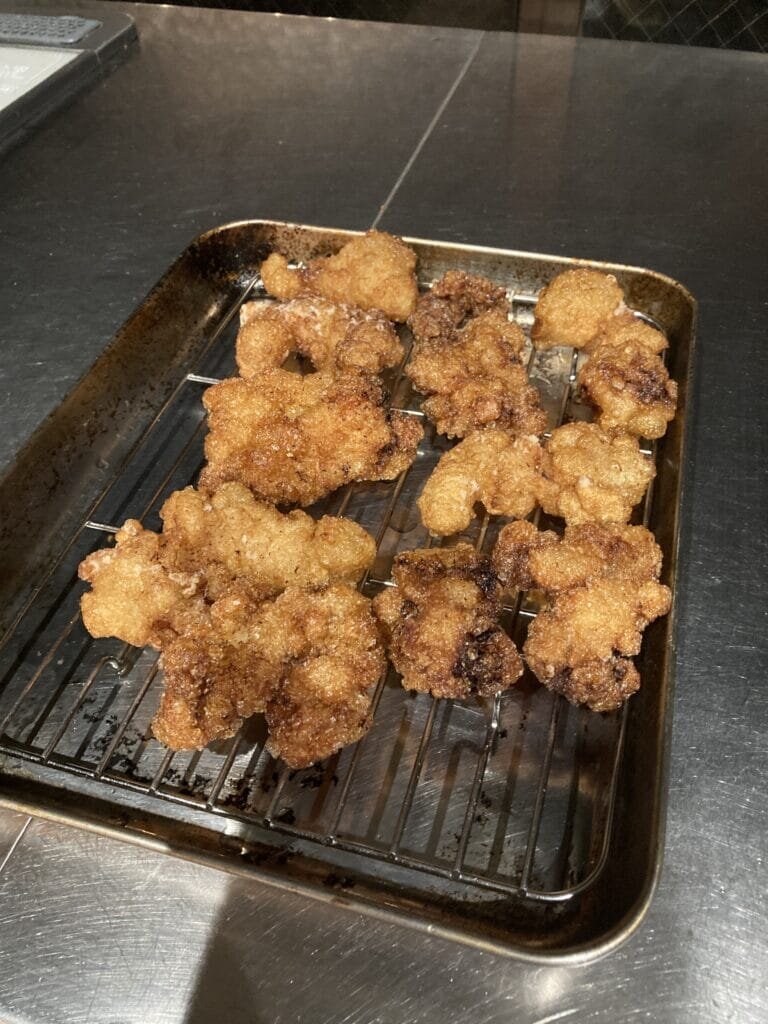
Where to enjoy Horumon in Osaka
Final
Some people will love Japanese offal and some people will hate it. However, there are so many ways to enjoy horumon that it’s great to try each variation. Whether yakitori or deep fried, don’t miss out on one of Japan’s most unique dishes!

























Hi,
What a great insight. I wonder if you could share a recipe for horumon don bowl with thick sauce. It captured my heart when I visited Tsukiji market. There’s nothing like it in my country.
Thanks!
[…] 17. Horumon / Horumonyaki (Japanische gegrillte Schweinefleisch-/Rindereingeweide) […]